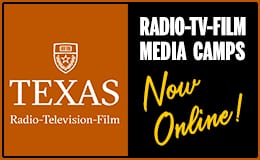A learning disability is a neurological condition that interferes with a child’s ability to store, process, or produce information. Its effects can be seen in a wide variety of areas, including reading, writing, speaking, spelling, math computation, reasoning, attention, memory, coordination, social skills, and emotional maturity.
What a learning disability is NOT, is a sign that a child is lazy or unintelligent. In fact, most children with learning disabilities are of average or above intelligence. Their brains simply learn differently, and they need to be taught in ways that are best suited for how they process information.
Learning disabilities are sometimes referred to as “hidden disabilities,” as they are not physical disabilities, which are more easily seen. Chances are, though, that you know at least one child with a learning disability. According to the Learning Disabilities Association of America, 2.3 million students are diagnosed with specific learning disabilities and receive services under IDEA, Individual with Disabilities Education Act. This means that approximately 35% of all students receive special education services for a learning disability.
The following are classified as specific learning disabilities:
Auditory Processing Disorder
Children with this condition may have trouble hearing the differences between sounds, understanding the order of sounds, recognizing where sounds are coming from, or filtering sounds from background noise.
Dyscalculia
Dyscalculia affects a child’s ability to understand numbers, learn math facts, and develop math skills. Some children with dyscalculia find it difficult to memorize numbers, tell time, count, and organize numbers.
Dysgraphia
Children with dysgraphia have difficulty with their handwriting and other fine motor skills. They might also have trouble with spelling, inconsistent spacing, writing composition, spatial planning on paper, and thinking and writing at the same time.
Dyslexia
Dyslexic children may have difficulty learning to read and may be slower readers once they do learn. They also may have trouble with vocabulary, spelling, and/or comprehension. In addition, they may exhibit organizational problems with both written and spoken language, and may also demonstrate difficulty learning their left from their right.
Language Processing Disorder
Language Processing Disorder is a specific type of Auditory Processing Disorder and relates only to the processing of language. This disorder can affect what a child says or how he understands what others say. He might have trouble expressing thoughts, comprehending what he reads, labeling objects, and understanding jokes.
Non-Verbal Learning Disability
This form of learning disability usually presents itself with a significant discrepancy between higher verbal skills and weaker motor, visual-spatial, and social skills. Signs include trouble interpreting non-verbal cues such as body language, facial expression, and the nuances of conversation. Despite verbal proficiency, a child with a non-verbal learning disability often exhibits poor reading comprehension.
Visual Perceptual/ Visual Motor Deficit
These disabilities can cause children to have difficulty observing the differences between numbers, colors, shapes, objects, patterns, and letters. Children can also struggle with cutting and with holding a writing utensil too tightly. They may also lose their place frequently when reading and writing.
What should I do if I suspect that my child has a learning disability?
You are wise to trust your intuition. Parents are often the first to sense that “something isn’t right.”
If your child is school-aged, the best place to start is with his or her teacher. If the teacher is similarly concerned, he or she can initiate an evaluation. Next, a support team will meet to decide if an evaluation is warranted based on academic impact. The school system is required by federal and state law to evaluate your child at no cost. If your child is preschool aged, you can still reach out to your school district to request an evaluation, or your preschool may be able to make private testing recommendations.
You can also have your child privately tested. A mental health professional, ideally a neuropsychologist, is the best person to evaluate and diagnose your child. Your pediatrician can often recommend a professional who specializes in learning disability evaluations.
If testing does determine the presence of a learning disability, your child’s school will work with you to devise a plan of in-school services to address your child’s specific needs. Depending upon the specific disability, your child may qualify for special education services under the Individuals with Disabilities Education Act or accommodations through Section 504 of the Rehabilitation Act.
Early Intervention is Key
Learning disabilities cannot be cured; however, with the right intervention, children can absolutely be successful in school and in life! Children who don’t receive the support they need typically suffer from lower self-esteem and may become frustrated. Those who are identified early, and who receive appropriate care, can avoid many of the struggles of being undiagnosed, and can be taught that they are not alone. They are smart and capable learners, who simply need to process information differently.
Alison Bogle is an Austin Mother of three kids.
















